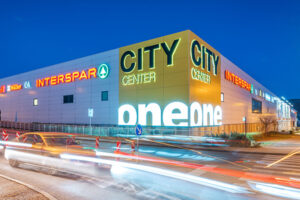By Markus Wotruba
Once the weekend comes around, we’ll see them: millions of people flocking into the shopping streets and centers of this country. Exactly how many there are is only measured very sporadically. And it is not only vendors who require accurate measurements of customer frequency.
Local event organizers and municipalities also need exact figures to determine the effects of marketing and discount campaigns. After decades of the same counting procedures being used, we are now virtually overrun with recent technical developments in the field.
The biggest hopes lie with real-time counting via Wi-Fi. Not only would customers’ shopping experience be improved by free internet use, the new counting method would also work without having to analyze personal data.
This efficient way of measuring traffic in pedestrian zones and other shopping locations would therefore come as a simple by-product of an already highly requested service for customers. It is thus surprising that very few places are so far using it. Moreover, vendors are losing out on an important opportunity to profit from digitalization.
Tally-ho!

Let’s start at the beginning: The fastest and simplest way of measuring customer frequency is the traditional, mechanical tally counter used by airplane cabin crews to compare check-in numbers with passengers on board.
In shopping centers, it’s mostly pensioners or students who are posted at the entrances and tasked with pressing the little button once for every passing customer—making that characteristic “click.”
The advantage is that it is an uncomplicated way to obtain individual sets of figures. The list of disadvantages, however, is long. Despite high staff costs, manual tallies only provide a snapshot. Wide entrance doors and large groups make accurate counting more difficult. The tally counter therefore delivers less reliable figures and remains more useful for smaller groups.
The pitfalls of progress
Electricity followed the steam engine—a similar development is seen in customer counting. Modern technology allows us to continually collect data, 24 hours a day, 365 days a year. When a customer walks into a shop today, for example, he may pass a photo sensor installed in the door.

The advantage is that visibility does not influence the counting process and staff costs are minimal. The same is true for laser-assisted counting. But even with these modern methods, there are some pitfalls. A couple or a parent with a child who pass through the barrier together might, for example, only be recognized as one person. This is especially problematic with wide entrances.
Moreover, the walking direction is not considered, so the sensor does not distinguish between people entering and leaving the center or shop. One possible solution for more reliable and precise measurement are bidirectional, multi-beam sensors. Unlike the common unidirectional single-beam sensors, these systems recognize individual persons and their walking direction.
Their downside: high costs for installation and regular maintenance. The distribution of these costs is often a subject of debate, especially if more than one party uses the same system.
On the same wavelength?
In 1992, the first nationwide mobile phone network was put into operation in Germany. The mobile phone became an item of everyday use. Because the phones always need to be connected to a tower, network providers can determine location relatively simply. This is not the method of choice for shop owners and municipalities, however.
For one thing, sole responsibility for data sovereignty is with mobile network providers. What’s more, each network only covers a certain portion of the pedestrians—its own customers. One would therefore need cooperation agreements with several network providers to obtain significant data.
Additionally, a laser or photo sensor would be needed for reference because the market share per individual network provider at a given location is unknown. This method would thus not only be very time-consuming; it would also entail unforeseeable costs—two potential risk factors.
One service—many (missed) opportunities
The real solution could come from comprehensive Wi-Fi coverage. In 2007, Apple launched the iPhone and, with it, radically changed the mobile phone market. Nowadays nearly everyone owns a smartphone and many people use free Wi-Fi networks when they are out and about. In contrast to Bluetooth or infrared, the Wi-Fi function of a smartphone is often turned on permanently.

Regardless of network provider, the exact number of smartphones using a given Wi-Fi network can therefore be counted without requiring customers to sign in individually. Due to global, uniform Wi-Fi standards, tourists’ phones can also be counted. The required technology is relatively inexpensive and, in many locations, already available within the existing infrastructure.
It is therefore quite astounding that only a very few German retailers use suitable Wi-Fi solutions. They are the exception even in core locations in metropolitan areas. BBE Handelsberatung recently conducted a test of Wi-Fi quality at the top 11 shopping locations in Munich. Four of the candidates provided very poor or non-existent coverage, while a further three only offered insufficient coverage. Only four of the locations tested had an acceptable Wi-Fi network.
This reluctance to adapt could come at a high price. Top online companies have begun to take interest in customer data. The possible consequences of this were recently shown in the German town of Diepholz, Lower Saxony. Since November 2016, eBay has been providing free Wi-Fi in the town center as a pilot project. This is not merely an act of kindness. The same products offered by local retailers have since appeared online, on eBay’s own platform. Diepholz is only the beginning: There have since been plans to expand the project to larger cities.






